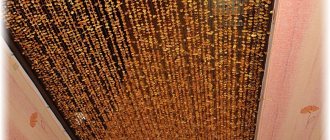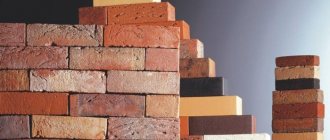Tools for work
In stores you can purchase various professional tools and multifunctional woodworking machines. They make work much easier and are convenient and safe to use. However, knowing how to use hand tools is more important. Every beginning woodcarver should learn to work with simple chisels, saws and planes.
These skills will help you in the future:
- master professional machines faster;
- correct inaccuracies;
- make miniature patterns.
Experienced craftsmen do not recommend buying ready-made sets of tools for manual cutting. They are expensive, but do not always differ in quality.
A set may have a good knife but bad chisels, so it's better to buy each tool separately and put together a truly useful set that will last for several years.
The most important tool for working with wood is a saw. With its help, you can separate even pieces of the desired size from a solid block.
Suitable:
- hacksaw;
- bow saw;
- jigsaw
It is advisable to purchase several types of saws with different tooth sizes. The condition of the paintings must be carefully monitored. Saws should always be sharp and the blade should be well tensioned.
You should also buy a plane . A novice craftsman can buy a hand tool with a cutting surface of medium width. When you gain experience, you will need a jointer and a scraper. They are needed for more thorough leveling of wooden surfaces.
To work with small parts you need chisels . The set should include tools with wide, pointed edges, as well as narrow and thin ones. Blades can be straight or beveled. They should always be sharp, so chisels will have to be sharpened frequently. For this purpose, you can use sandpaper or a special machine.
Working with blunt tools is dangerous because the blade will not penetrate the wood as deeply as required. This increases the risk of the tool “jumping off”, which is dangerous for the carver. He could be seriously injured. In addition, the carving made with such a tool will turn out crooked, and the work will take more time and effort.
In the table you can see what other tools may be required and why:
| Tool | Purpose |
| Hand drill | Drill through holes and small recesses |
| Knives of different sizes | Hew small pieces of wood, plan small parts |
| Small ax | Cutting off small branches and making notches |
| Sandpaper of different grits | Sanding products |
| Clamp | Securely attach the surface to be treated to the countertop |
There are many other wood carving tools available. When a novice master gains experience, he will be able to independently determine which chisels, knives or saws he needs and what is more convenient to work with.
Tools
Wood carving, the geometry of whose patterns often amazes with its beauty and attractiveness, requires the selection of appropriate tools, such as:
- Knife-jamb . It is characterized by a beveled blade that allows you to create geometric patterns - triangles, squares, lines, etc.
- Flat chisel. A small product that is no more than 2 centimeters wide is best suited.
- Hacksaw. It is necessary for cutting out small parts of a workpiece or cutting off unnecessary wood elements.
- Round, square and semicircular files . With their help, you can make recesses and holes of certain shapes.
- Rulers. These tools are usually not used for wood carving. At the same time, geometric patterns often need to be symmetrical. Therefore, in this case it is impossible to do without a ruler.
- Pencil. It is necessary for marking the previously selected workpiece. This way you can improve the quality of work and significantly reduce time.
- Compass. This simple tool allows you to correctly mark the workpiece if a round ornament is created on it.
- Eraser. It is used primarily for correcting pencil lines. In addition, such a tool is required after completion of the work if there are some marks left on the wood.
Thus, geometric wood carving does not require a large number of different devices. Often it can be done with a minimal set of tools.
READ What is wood marquetry?
Tips for choosing wood
Professionals divide wood into 3 types:
- soft;
- hard;
- superhard.
Beginners should give preference to the first 2 options. Soft wood is pliable. It is easy to cut small parts from it, forming beautiful patterns. Hard materials are a little more difficult to work with, but they are more durable. Figures made from such wood do not dry out over time and do not burst.
It is easy to work with the following types of wood:
- spruce;
- chestnut;
- fir;
- pine;
- willow;
- Linden;
- poplar;
- alder;
- beech;
- birch;
- aspen;
- ash;
- elm.
Expensive and high-quality furniture is made from super-hard wood. It is difficult to work with this material manually; large machines are often used for processing, so this wood is not suitable for carving.
Carver's workplace
Professional carvers work at a workbench. For beginners, you can limit yourself to a tabletop. It should be stable and wide. The height of the table is adjusted individually for the master. In order not to strain your back and feel comfortable, you should choose a tabletop that is waist-high, but not higher.
The countertop needs to be wiped regularly and its condition monitored. When working, knives often slip and stick into the table, which creates nicks that need to be sanded down. To minimize damage, you must follow the rules for using the countertop. You cannot throw sharp tools at it, chop with an ax or hammer in nails.
To work you need good lighting. Installing a tabletop near a window is not enough. You will need 2-3 more lamps that will illuminate the work area from different sides. The lamps should be installed above the carver's eyes so that they do not blind him. You can purchase lighting fixtures with flexible legs that can be tilted in any direction.
Types of carving and technique
Types of wood carving are divided into several groups:
- contour;
- geometric;
- flat-notched;
- sculptural;
- end-to-end;
- embossed.
Each technique has its own characteristics, which you can read about later in the article.
Contour
Contour threads are characterized by narrow recesses with 2 edges. They are made shallow and carried along the entire product. The main patterns are elements of living nature, for example, plant leaves, inflorescences, berry bunches, as well as animals and birds. The picture that is obtained thanks to this technique visually resembles engraving. All lines are rough, with clear edges. Light and shadow remain undefined.
Experienced craftsmen prefer to mix this technique with other types of carving, for example, geometric and flat-relief. This style also goes well with many traditional paintings.
Pure contour patterns, without collaborations with other styles, look good only on small wall panels. Such patterns are made using chisels and a knife with a beveled blade. The technique of contour carving is simple, but in order to decorate various products with it, you need artistic experience and skillful use of tools.
Geometric
This type of carving is one of the easiest to perform. The patterns consist of indentations of different sizes, which have from 2 to 4 edges.
Together they form various geometric shapes:
- triangles;
- diamonds;
- circles;
- rectangles.
This technique is used to decorate furniture and also create unusual-looking kitchen utensils, for example, hot pads. For work, they use the simplest set of tools: knives, chisels and cutters.
Flat-notched
Another simple wood carving technique that requires only a knife with a beveled blade. The peculiarity of flat-pit carving is the smooth surface of the background. The recesses in the wood are made shallow. The lines are smooth, but have sharp edges.
The finished drawings are visually similar to those made using the contour technique. They also do not have a clear division into light and shadow. The main patterns are elements of living nature, such as trees, flower buds and animal silhouettes.
Sculptural
This is one of the most difficult types of wood carving. It differs from previous techniques in that the image is not flat, it is three-dimensional. Sculptural carvings include three-dimensional figurines of animals, people and divine idols.
Sculptural wood carving
In the Middle Ages, such carvings were used to decorate the roofs of rich houses, decorate the inside of rooms, and place large wooden figurines on the bows of ships. Currently, sculptural carving also refers to decoration.
Wood is shaped with more than one tool; more often than not, several sets are used. Learning to work with this technique will require a lot of time and patience.
Through
This type of thread has several alternative names: through, openwork and sawn. The resulting pattern resembles thin lace. This effect is achieved by sawing through sanded boards.
The peculiarity of this technique is the complete or partial removal of the background. Craftsmen use this wood processing technology in various design options. Through carvings decorate the frames of windows and doors, as well as cornices. Often such wooden patterns can be replaced on stair railings.
This technology is also used for small decorative elements, for example, for boxes, picture and mirror frames and caskets.
Embossed
This technology is similar to sculptural carving in terms of complexity. On a flat background, craftsmen carve convex, three-dimensional images. These can be figures of animals, plants and even human portraits.
Relief carvings are divided into 2 groups: bas-relief and high relief. In the first version, the ornament turns out to be convex to more than half the thickness of the main workpiece. In the second case, the pattern is made very voluminous. All lines rise above the background and have smooth curves.
Coloring
As you know, the leaves of trees are green (emerald) in color, the trunk and branches are brown. If the plant has flowers, for example, sakura has pink inflorescences, they should be outlined with a thin black stripe.
You can show your imagination and make the tree alien. Color the leaves purple and the trunk red. It all depends on the artist’s imagination. The children are given the task: think about what trees could be like on Mars, Venus or Jupiter. As a result, the children will not only have a great time doing a useful activity, but will also learn a lot of new things about space and the solar system. An unusual alternative would be to use pastel pencils. This pattern will be more vibrant and original.
Precautions during operation
Before you start getting acquainted with wood carving, you need to learn about safety rules. The entire instrument is very sharp. They can easily get hurt, and sometimes you can get so seriously injured that you end up with disability.
What needs to be done to reduce these risks:
- Install the countertop securely and firmly. The table should not sway from side to side or move around the floor.
- The workpieces should be secured to the table with special tools - clamps. Only they are able to reliably fix the part. Any other available materials are not suitable for this purpose.
- Lamps and lamps should not blind the carver. They need to be placed so that the tabletop is well lit and no shadow falls from the master.
- When sharpening chisels and knives, you should wear gloves and safety glasses. Small chips can get into your eyes, and the knife blade can accidentally slip off the machine and injure your hands.
- The quality of sharpening of any tools should be checked on a special whetstone, and not with your fingers.
- When working with cutting tools, you should hold them away from you, and also make sure that your other hand is at a safe distance from the knife.
- There should be no foreign objects in the workplace.
- After each cutting stage, you need to remove chips from the table using special brushes. If too much debris accumulates, a sharp tool may get lost underneath it, and when cleaning, it will stick into your hand.
- All knives and chisels should have a place. Experienced craftsmen recommend placing a jar on the table in which the carver will put away the tools and take them out when necessary. When the work is completed, all accessories must be placed in places for permanent storage.
- When using electrical appliances, it is important to ensure that the cord does not become tangled or twisted.
- You cannot plug several devices into an outlet at once. Many wires on the floor can become intertwined. It's easy to trip and fall on them.
Wax mastic is often used for work. It should be heated on an electric stove, but not over an open fire.
It is unacceptable to place heating elements where chips will fly. It ignites quickly. Wood blanks smolder at a temperature of 214 degrees, then begin to burn, so it is important to monitor fire safety.
The workshop should always have bandages, cotton wool and disinfectant solutions for the skin. Even professional craftsmen are not immune from accidental injuries. Wounds need to be treated as quickly as possible. If the damage is serious, you should postpone work until complete recovery.
Preparing for work
For the first lesson, you need a board measuring 170 by 110 mm and 2 cm thick. Sketches for this work will be given below. The surface of the board must be sanded with sandpaper. Now, using a ruler and a simple pencil, draw out the entire surface of the tree in 5 cm cells.
Wood carving patterns
Then we draw all the figures, as shown in the figure below. There were 7 figures in total: pegs, diamonds, a twist, a pyramid, stars, squares and a rosette. From these figures you can then create new patterns. A photograph that shows what compositions can be made from just elements, and how the composition looks after processing and painting the wood.
Preparing a wood blank
You need to cut a board of the required size from a piece of wood. For the first time, it is enough to take a small canvas with a thickness of 2 cm.
The surface must be sanded with sandpaper. There is no need to rub it too hard - just remove small chips and splinters. Removing such defects will allow the tool to glide easily across the surface. Additionally, there will be no splinters left on your hands.
Field preparation
A flat, smooth surface needs to be outlined. Using a ruler and pencil, divide the entire area into cells with a side of 5 cm. The parameters of the cells depend on the size of the pattern and its “details”.
READ What joinery joints are there for wood parts?
Draw the workpiece around the entire perimeter. Each cell will become the basis for the formation of an element of the future ornament.
Sketching a pattern
Passing between the cells, a pattern is formed, which will later be cut out with a knife. You can use the one presented above, or a more complex one - it all depends on the skill level of the master.
More complex versions of the design use smooth, curved lines.
Stages of woodworking
Wood carving (pictures depicting different technologies will help beginners understand how to work with wood correctly) always begins with an idea. The master comes up with patterns and makes a schematic sketch on paper, which he then transfers to a wooden surface using a simple pencil or marker.
He then carves out the rough design, then cuts off the corners and makes the lines smooth. Processes the background, polishes all the details and varnishes the finished product.
Further in the article you can read a description of the stages of work in different techniques.
With house carving
Wood carving (pictures are needed to correctly represent the basics of the technology) of this type is similar to the through technique. The master makes through cuts in the workpiece, completely removes the background and leaves only openwork patterns. Such carvings decorate window frames, doorways and roofs of houses.
The work is carried out in 3 stages:
- Choosing a style . All patterns must be in harmony with each other, so the master first selects suitable stencils. Then he transfers them to the workpieces.
- The background is removed using a drill and jigsaw. The ornament is carved by hand using chisels and knives.
- The finished work is sanded and varnished.
For house carvings, hardwood is chosen. It is not prone to rotting and delamination, so it can last more than 20 years.
Carved wood decor with three-dimensional carvings
Wood carving (the pictures show the procedure for working) with convex patterns is carried out in 6 stages.
They can be examined using the example of making a large brooch with images of mountains:
- The master cuts out a round blank and transfers the sketch onto it.
- Using knives and chisels, he carves small indentations along the drawn outlines.
- Using a special knife, the carver gives rounded outlines to the patterns and removes sharp corners and serifs.
- Sands the product using sandpaper of different grain sizes and an abrasive sponge.
- Paints the product with paints.
- After complete drying, treat the craft with wax mastic.
Soft wood is suitable for such work. It is easier to create smooth contours and convex elements.
With geometric wood carvings
Wood carving (pictures will help you make the markings correctly) with geometric carvings is quite simple to perform. Most of the time is spent on creating sketches and markings.
Using the example of making a box, we can consider 5 main stages of work:
- First you need to think about the location and shape of the patterns on each wall of the box, as well as on the lid. You will need to make a schematic drawing.
- Then the product is lined and even squares are drawn on all sides.
- The cells make up the intended pattern.
- Starting from the edges and moving towards the center, the pattern needs to be cut out on each side of the box.
- At the end, the product is sanded with sandpaper. Periodically sweep away the crumbs with a special brush.
Products that will be actively used are varnished by craftsmen. You can choose a colorless coating or a colored one that imitates the natural shades of other wood species.
With slotted
This is a through carving, where the background is completely removed using a jigsaw, but the pattern remains.
The work is carried out in 4 stages, which can be considered in more detail using the example of making a book stand:
- The master selects a sketch, transfers it to paper and pastes it on top of a wooden blank.
- Drills holes. Where the jigsaw blade will be inserted. Then he cuts out the pattern, removing the background.
- Sands the product with sandpaper of different grits.
- Connects the parts of the stand with glue and covers with colored varnish.
For products with slotted patterns, it is recommended to use hardwood.
Tree of Wisdom
To draw a tree of wisdom, you need to decide on its theme. The picture is dedicated, for example, to education, advice, care, positive quotes. Several cards are prepared that resemble leaves or fruits (apples, pears).
A small text is written in the center of each or an image is pasted on a pre-selected topic. Draw a large tree, you can use whatman paper. After coloring, prepared cards with aphorisms are placed on the branches. This is done with glue and a stapler. A wisdom tree would be a great classroom or office decoration. It is recommended that the whole team do it, it promotes team unity.
Geometric carving master class
This is one of the most popular types of carving. Professional carvers advise beginning craftsmen to use this technology for their first works.
What tools and materials will be needed:
- harvesting from soft wood, such as linden;
- knife with a beveled blade;
- a simple pencil;
- eraser;
- ruler;
- compass;
- fine grit sandpaper.
Before work, you need to inspect the workpiece and sand it if necessary.
Sketching a pattern
You can download pictures for stencils or draw them yourself. First, the blanks are made on thick paper, and then transferred to a prepared wooden board for carving. To prevent the stencil from bending when tracing, it can be soaked in acrylic varnish and dried.
You need to trace the template slowly. First, draw all the lines along the contour, then highlight the inner pattern.
Cutting out patterns
You need to cut out patterns from the edge, gradually moving towards the center. The knife should be positioned at a 45 degree angle and apply light pressure. You need to remove the layers one by one. If you don’t have enough strength, you can press with both hands, the main thing is that the blade is located away from the cutter, and not vice versa.
In places where the lines are smooth, for example, where there are circles, you need to cut shallowly. It is better to go over one place several times, removing 3-4 layers one by one, than to make a sudden movement and ruin the drawing. When the carving is finished. Use an eraser to remove all markings.
Grinding and impregnation of the finished product
The finished work must be cleaned of dust and crumbs with a special brush. Then take sandpaper and carefully grind off all sharp corners and remove burrs. If you plan to use the product frequently (pick it up, move it from place to place), then it needs to be impregnated with varnish in 2-3 layers.
For decorative crafts that will decorate the room, impregnation with wax mastic is sufficient.
Master classes on creating wood carvings
Before work, you need to prepare all the necessary tools and materials for marking, cutting and grinding. The production of any wooden figurines begins with a rough blank. This is a rough piece of wood that is marked and shaped into angular shapes. There is no need to remove all the excess, just cut off large corners and burrs.
One of the most popular three-dimensional figures, the production of which first of all novice craftsmen try to master, is a bear.
To make the product beautiful, you must follow the following algorithm:
- On a walnut block 10x5 cm, 5 cm thick, a sketch of the future figure is drawn.
- Trim off the excess and do rough processing with a knife.
- Using a pencil, draw the back side of the figure and its upper part.
- Using chisels of different thicknesses, gradually remove several layers. Each time the thickness of the chips should decrease.
- Using a small knife, they work out the texture of the fur, forming other small details, teeth, eyes, claws.
- Sand the product with fine sandpaper, then polish and varnish.
Walnut is a hard wood. For the first experiment, you can use pine or linden.
Beginners are often interested in silhouettes of sitting animals, such as foxes or cats. They can be made by analogy, with minor changes.
Procedure:
- Select a sketch and transfer it to the workpiece.
- Saw off excess material.
- Carry out rough processing, observing the main contours.
- Then start working out the details. Needs to be specified. Where the animal will have paws, head, torso and tail.
- Cut out the shape of the muzzle, mark the location of the ears.
- Sand the product to make its contours softer.
- Use small tools to make details clearer.
- Sand the work again with fine sandpaper.
- Using a small knife, cut out the texture of the fur, marking the eyes, teeth and other small details.
At the end, all that remains is to do the final sanding and saturate the finished product with varnish.
Wood carving can be learned in a short time. In the process of work, you need to follow safety rules, as well as follow the action algorithms consistently. Step-by-step master classes and pictures with ready-made stencils will help beginning craftsmen.











